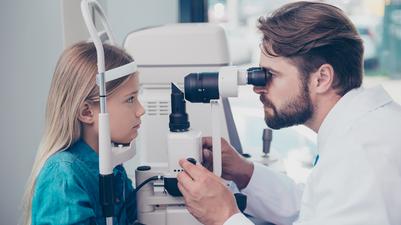Disease name: Leber Congenital Amaurosis
ICD-10 Disease Code: H35.50
Unspecified hereditary retinal dystrophy
ICD-10 Disease Group: H35 Other retinal disorders
General description:Leber congenital amaurosis (LCA) is a rare genetic disease that affects the eyes. In infants, the disease often causes complete blindness from birth. The level of visual impairment caused by the disease usually remains stable throughout patient lifetimes, with a small risk of disease progressive.
The disease primarily affects the retina, which is the tissue in the back of the eye that registers colour and light. The pupils in patients suffering from LCA adjust slowly or not at all to changes in levels of light entering the eye.
It has been reported that in rare cases, LCA patients may also experience learning disabilities, however, this is disputed among researchers.
Mutations:Mutations in at leat 14 genes are known to be associated with the development of LCA at birth. These are genes affecting the natural development of light detecting cells, as well as nerve cells responsible for phototransduction. The most frequently mutated genes are CEP290, CRB1, GUCY2D, and RPE65. Several different mutations in each of these genes are associated with the development of the disease.
Disease frequency:LCA is estimated to affect 1 to 2 in every 100,000 people globally.
The disease affects the male and female population equally.
Symptoms:Symptoms of LCA usually present themselves at birth or within the first few months of life, and babies suffering from the disease are at risk of blindness from birth. Other vision problems related to the disease include increased light sensitivity, extreme farsightedness and involunatry eye movements. Patients are also more likely to develop cross-eyedness and have abnormal pigmentation in the eyes.
Treatment:There is currently only one FDA-approved treatment for LCA. This is a gene therapy called Luxturna, which is based on an adeno-associated virus vector that delivers a healthy copy of the RPE gene to cells in the retina. This treatment is not a cure but it does substantially improve vision in eligible patients. Luxturna is suitable for patients suffering from biallelic RPE65 mutation-associated retinal dystrophy.
Sources:- https://medlineplus.gov
- https://rarediseases.org
- https://rarediseases.info.nih.gov
- https://www.ema.europa.eu








